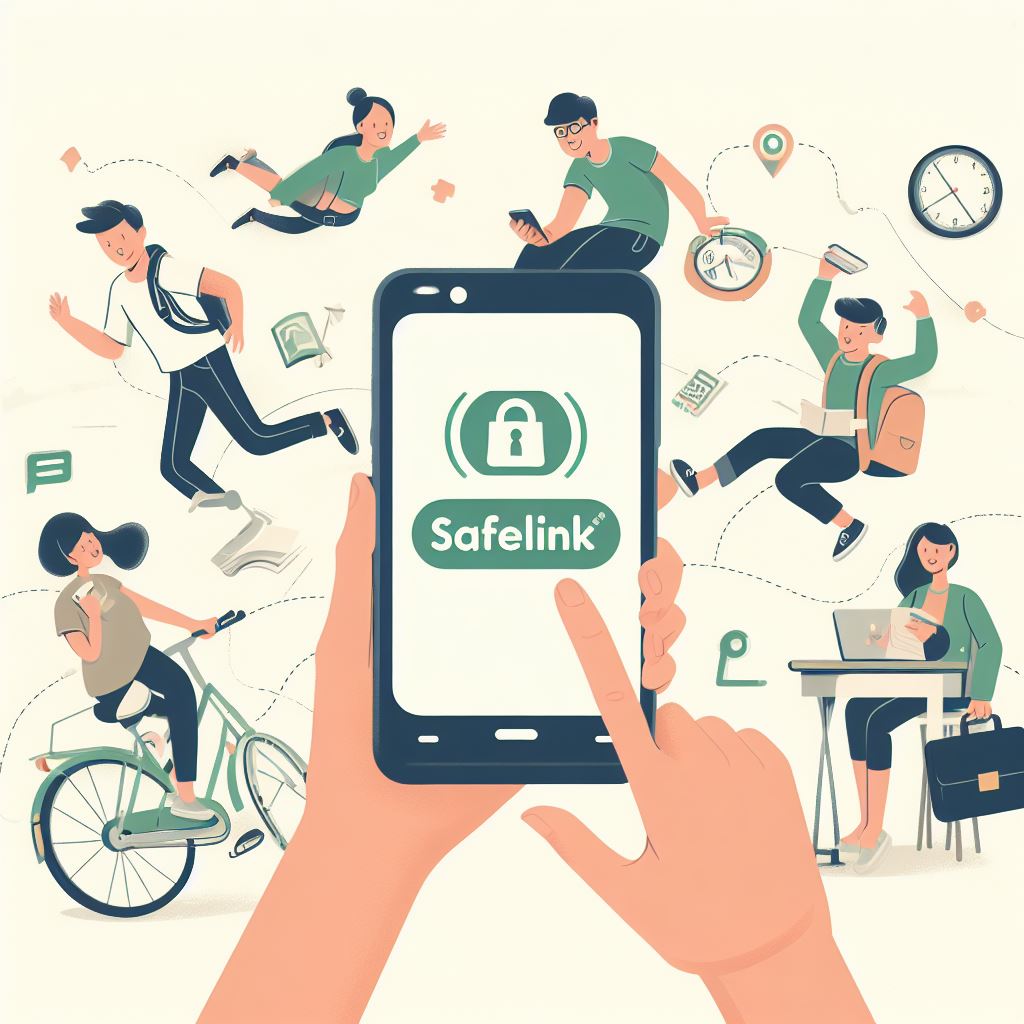6 Tips on Safelink Lifeline Assistance Program Eligibility

Looking to qualify for the Safelink Lifeline Assistance Program? Wondering if you meet the eligibility criteria? Look no further!
This article presents you with six essential tips to ensure you meet the requirements and successfully apply for the program.
From income guidelines and proof of eligibility to the application process and document requirements, we’ve got you covered.
Stay tuned to avoid common mistakes and navigate the re-certification process effortlessly.
Let’s get started!
Key Takeaways
- Income guidelines and accurate reporting of household income are crucial for determining eligibility for the Safelink Lifeline Assistance Program.
- Proper documentation, including pay stubs, tax returns, and government-issued identification, is required to prove eligibility and participate in the program.
- Understanding the application process, avoiding common mistakes, and submitting all necessary documentation are essential for a smooth and successful application.
- Re-certification is necessary to maintain eligibility and ensure continued assistance, and following instructions and submitting required documents in a timely manner is crucial for ongoing benefits.
Income Guidelines
To determine your eligibility for the Safelink Lifeline Assistance Program, you must meet the income guidelines set by the program. These guidelines are in place to ensure that the program is helping those who truly need it.
The income guidelines take into account the size of your household and your annual income. For example, if you live alone, your annual income must be at or below a certain amount. If you live with one other person, the combined annual income of both individuals must be at or below a different amount. The income limits increase as the size of your household grows.
It’s important to note that the program considers your total household income, including wages, salaries, tips, child support, and any other sources of income. It’s also important to report all sources of income accurately and honestly. Providing false information may result in disqualification from the program.
If you believe you meet the income guidelines, it’s recommended to gather all necessary documentation, such as pay stubs and tax returns, to support your application.
Proof of Eligibility
Once you have met the income guidelines, you’ll need to provide proof of your eligibility for the Safelink Lifeline Assistance Program. Here are three types of documentation you can use to prove your eligibility:
- Income Documentation: You can provide recent pay stubs, unemployment benefit statements, or a letter from your employer stating your income. If you’re self-employed, you can submit your tax return or business receipts as proof.
- Government Assistance Program Participation: If you’re currently receiving benefits from other government assistance programs such as Medicaid, Supplemental Nutrition Assistance Program (SNAP), or Federal Public Housing Assistance (FPHA), you can provide documentation of your participation in these programs.
- Program-Specific Qualifications: In some cases, additional documentation may be required to prove your eligibility. For example, if you’re applying based on your participation in a Tribal-specific program, you may need to provide proof of your enrollment in a recognized tribe.
Remember to read the Safelink Lifeline Assistance Program guidelines carefully to ensure you provide the correct documentation. Submitting the required proof of eligibility will help expedite the application process and ensure that you receive the assistance you need.
Application Process
Now that you understand the proof of eligibility requirements, it’s time to discuss the application process for the Safelink Lifeline Assistance Program.
In this section, we’ll explain the eligibility requirements in more detail, as well as highlight some common mistakes to avoid when filling out your application.
Eligibility Requirements Explained
You must meet specific eligibility requirements when applying for the Safelink Lifeline Assistance Program. To qualify for the program, you need to meet the following criteria:
- Income Level: Your household income must be at or below 135% of the Federal Poverty Guidelines. The exact income threshold may vary depending on your state.
- Government Assistance Programs: You may also be eligible if you participate in certain government assistance programs such as Medicaid, Supplemental Nutrition Assistance Program (SNAP), or Federal Public Housing Assistance (FPHA).
- Documentation: You’ll need to provide proof of your eligibility, such as income statements, proof of participation in government programs, or Social Security documentation.
By understanding and meeting these eligibility requirements, you can increase your chances of being approved for the Safelink Lifeline Assistance Program.
Now let’s move on to the next section where we’ll discuss common application mistakes to avoid.
Common Application Mistakes
When completing your application for the Safelink Lifeline Assistance Program, be mindful of common mistakes that can hinder your application process.
First, make sure to provide accurate and up-to-date personal information, such as your name, address, and phone number. Any errors or discrepancies can delay the processing of your application.
Additionally, double-check that you meet the program’s eligibility requirements, including income guidelines and participation in certain government assistance programs.
Another common mistake is failing to submit all the necessary documentation. Make sure to include proof of income, identification, and any required program participation verification.
Finally, be sure to sign and date the application form before submitting it. By avoiding these common mistakes, you can ensure a smoother application process.
Now let’s discuss the document requirements in more detail.
Document Requirements
To determine your eligibility for the Safelink Lifeline Assistance Program, you’ll need to provide certain documents. These documents are necessary to verify your identity, income, and participation in a qualifying assistance program. Here are the three key documents you’ll need to submit:
- Proof of Identity: You’ll need to provide a valid government-issued identification document, such as a driver’s license, passport, or state ID card. This document is crucial for confirming your identity and ensuring that you meet the program’s eligibility criteria.
- Proof of Income: You’ll be required to submit proof of your income to demonstrate that you meet the program’s income requirements. Acceptable documents may include pay stubs, tax returns, or a letter from an employer. If you receive assistance from other government programs, such as Medicaid or Supplemental Security Income, you may also need to provide documentation of your participation in these programs.
- Proof of Participation in a Qualifying Assistance Program: If you aren’t eligible based on income, you may still qualify for the program if you participate in certain assistance programs, such as Medicaid, Supplemental Nutrition Assistance Program (SNAP), or Federal Public Housing Assistance (FPHA). In this case, you’ll need to provide documentation that confirms your participation in one of these programs.
Once you have gathered all the necessary documents, you can proceed with the application process and submit them for review. After your initial enrollment, it’s important to understand the re-certification process to ensure continuous eligibility for the Safelink Lifeline Assistance Program.
Re-certification Process
To maintain your eligibility for the Safelink Lifeline Assistance Program, you’ll need to go through the re-certification process. This process ensures that you continue to meet the program’s eligibility criteria and allows you to continue receiving the benefits of the program.
The re-certification process is necessary to verify your continued need for lifeline assistance and to ensure that the program resources are allocated to those who truly qualify.
Typically, the re-certification process occurs annually, although the specific timing may vary depending on your state and the program guidelines. You’ll receive a notification from Safelink Lifeline when it’s time to re-certify your eligibility.
This notification will provide instructions on how to complete the re-certification process, which usually involves submitting updated documentation and completing a re-certification form. It’s important to follow the instructions carefully and submit all required documents within the specified timeframe to avoid any disruptions in your lifeline service.
Remember that it’s your responsibility to initiate the re-certification process and provide the necessary documentation. Failure to complete the re-certification process within the designated timeframe may result in the termination of your lifeline assistance.
Therefore, it’s crucial to stay on top of your re-certification requirements and ensure timely compliance to continue receiving the benefits of the Safelink Lifeline Assistance Program.
Common Mistakes to Avoid
To avoid potential issues during the re-certification process of the Safelink Lifeline Assistance Program, it’s important to be aware of common mistakes to avoid. Here are three common mistakes that you should be mindful of:
- Failure to submit required documentation on time:
One of the most common mistakes isn’t submitting the necessary documents within the specified timeframe. Make sure to gather all the required paperwork, such as proof of income or government assistance, and submit them promptly. This will help ensure a smooth re-certification process.
- Providing inaccurate or incomplete information:
Another mistake to avoid is providing incorrect or incomplete information on your re-certification application. Double-check all the details you provide, such as your address, phone number, and income information, to ensure accuracy. Any discrepancies may lead to delays or even disqualification.
- Neglecting to respond to requests for additional information:
During the re-certification process, you may receive requests for additional information from the Safelink Lifeline Assistance Program. Ignoring or delaying your response to these requests can result in your application being denied. It’s crucial to promptly provide any additional information requested to avoid any complications.
Frequently Asked Questions
Can I Apply for the Safelink Lifeline Assistance Program if I Am Currently Receiving Unemployment Benefits?
Yes, you can apply for the Safelink Lifeline Assistance Program if you are currently receiving unemployment benefits. The program is designed to help low-income individuals access free or discounted phone services.
Is There a Limit to the Number of Household Members Who Can Qualify for the Program?
Yes, there is a limit to the number of household members who can qualify for the program. The maximum number is determined by the state you live in, so check with your local authorities for specifics.
Can I Apply for the Program if I Am Already Enrolled in Another Government Assistance Program?
Yes, you can apply for the program even if you are already enrolled in another government assistance program. It is important to check the specific eligibility requirements to ensure you meet all criteria.
What Happens if My Income Exceeds the Eligibility Guidelines During the Re-Certification Process?
If your income exceeds the eligibility guidelines during re-certification, you may no longer qualify for the Safelink Lifeline Assistance Program. It’s important to report any changes in income to avoid potential disqualification.
Are There Any Restrictions on the Types of Documents That Can Be Submitted as Proof of Eligibility?
Yes, there are restrictions on the types of documents you can submit as proof of eligibility. Make sure to review the program guidelines to determine which documents are accepted.



